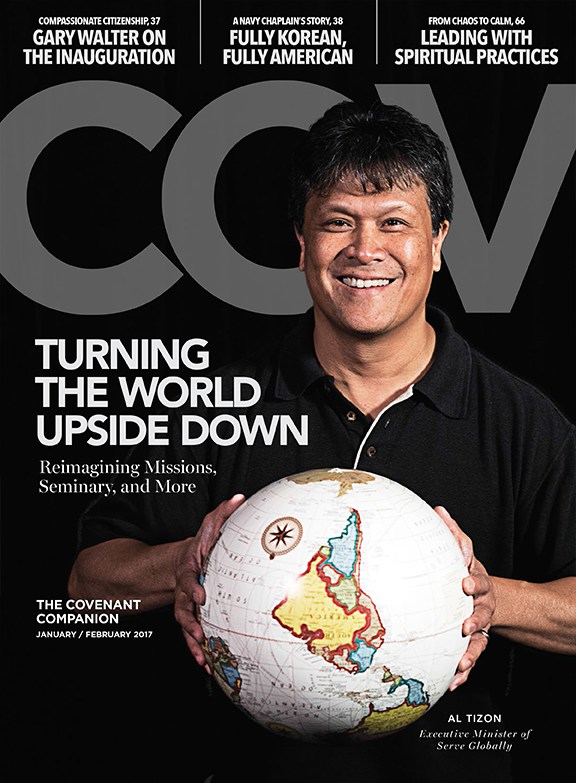CHICAGO, IL (October 6, 2011) – Brenden Smith, the worship leader at Pine Lake Covenant Church in Sammamish, Washington, has incorporated such unusual instruments as a stroh violin, mbira, mandola, and toy piano during Sunday morning services.
Geoff Twigg, a member of the Covenant’s Commission on Worship, has used a bow psaltery.
Worship leaders, such as Chris Logan at Lenexa Community Covenant Church in Lenexa, Kansas, also are increasingly using didgeridoo and other instruments associated with worship in other countries. (Definitions of the instruments are listed below.)
Others are using instruments that you don’t need to look up in a dictionary but are not typically found in worship services. Brad Boydston, pastor of MasterPiece Church in Laveen, Arizona, plays the ukulele. Dan Whitmarsh, pastor of Lakebay (Washington) Community Church regularly includes mandolins and has played the Autoharp at times.
Using a variety of instruments help give people a broader view of worship, says Smith, who has a degree in music theory and composition.
Leaders add that as much as they seek to be creative, they also try to be cautious in introducing unfamiliar sounds. “You don’t want to draw attention to the instrument,” says Boydston. “You want people to engage in worship.”
Smith agrees, adding that worship leaders must guard against using instruments for the “novelty factor.”
He had the toy piano for two years before he used it, for example. “I had to wait for the right song,” says Smith. The piano is not the cheap plastic instrument people normally think of, he adds. Rather, the solid instrument is made of wood and was especially popular between 1910 and the 1940. Classical music artists have used them in concerts.
To help reduce the novelty factor, the worship team introduces a new instrument by using it during the prelude, says Smith.
Smith has rejected some unique ideas even though they would have given him “just the right sound” because there was no getting around the novelty. “One time we got this really great dry-whacking-thud-kinda-sound by putting a contact microphone on a beanbag chair and hitting it with a baseball bat.”
He explains, “It was the perfect sound for this song. I wanted a powerful thud but didn’t want to use a drum. In practice, we were just laughing hysterically. We decided not to use it though because it would be too distracting to see somebody whacking a beanbag chair with a bat,” he adds, now amused that he had even considered the idea.
“A lot of it is using resources that are available to us,” says Smith. The Irish whistle was included in a service because a woman who plays flute in a symphony suggested it.
Churches also are using common instruments to deepen engagement in worship. MasterPiece often hands out rhythm instruments such as sticks and shakers to children, Boydston says.
Definitions:
Stroh violin: Also known as a horn-violin, it was used before amplification was possible for recordings. The violin uses a metal resonator and horn to amplify the sound in the same way as gramophones did. Contemporary musicians such as Tom Waits have used the instrument on their records.
Mbira: Also known as a thumb piano, it is an African musical instrument that has tuned metal strips attached to a resonating box. Musicians use their thumbs to pluck the instrument.
Mandola: The fretted instrument is the forerunner of the mandolin. Like the mandolin, it has four strings, but each is doubled.
Didgeridoo: The wind instrument also is known as a “drone pipe” and is indigenous to Australia and dates back at least 1,500 years.
Bowed psaltery: The instrument is a 20-inch long and eight-inch wide triangle with strings running its length and is played with a bow.
Categories:
News
My mother often played the mandolin in the lady’s string band during worship service at Bellingham Covenant Church in the ’30’s and ’40’s Elwood G